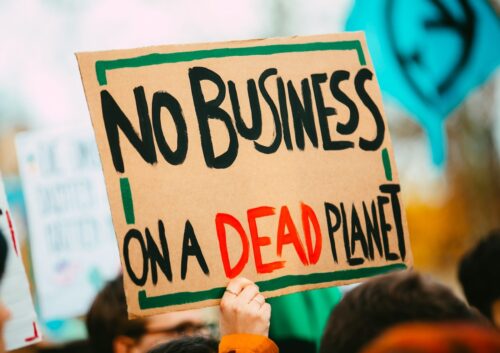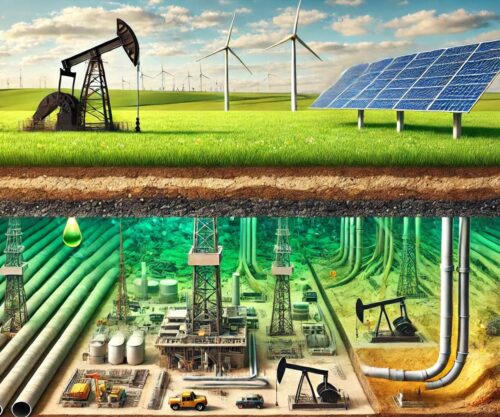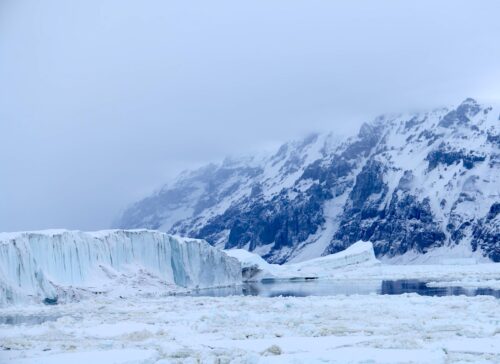
Fires require three key ingredients: an ignition source, fuel, and oxygen. Wildfires do not spontaneously combust because the planet is 1.2°C warmer now than in 1850. There must first be an ignition source. [emphasis, links added]
These can be natural, such as lightning, or man-made, such as fireworks, sparks, or arson.
Ninety-seven percent of fires between 1992 and 2012 had a human ignition source, according to a study published by the Proceedings of the National Academy of Sciences.
Mediterranean California is no exception. While the exact cause of the Los Angeles fires has yet to be determined, lightning has already been ruled out. Whether it was an accident, arson, or broken utility lines remains unknown.
If it was a broken power line, Southern California Edison must explain why it didn’t de-energize its transmission lines in the foothills.
What is known is that the weather conditions have been ripe for fires to escape containment and spread.
The Meteorology
Before the fires started, the National Weather Service office in Los Angeles warned of “life-threatening” and “destructive” windstorms.
Residents were advised to stay indoors and away from windows as strong northeasterly winds with gusts exceeding 80 mph were expected to hit the Santa Monica Mountains and surrounding foothills.
Such gusts can topple not only trees but also utility lines and loose objects that may ignite fires, which can spread rapidly.
The meteorology behind this is simple.
The whipping northeasterly winds resulted from a tight pressure gradient between high pressure over the Great Basin and low pressure over Baja California.
While the gradient of pressure points toward higher values, the acceleration acts inversely, shifting the prevailing wind direction to north, northeasterly. The tighter the gradient, the stronger the winds are.
As the mass of air moves toward lower pressures, it is channeled through mountain passes, descends the leeward side, and flows into the foothills.
Funneling air through a region of higher pressure causes it to compress, accelerating the air because the same mass is forced through a smaller opening — consider the rush of air you feel when the valve core is removed to deflate a tire.
Compression dries and heats the air at a rate of 17.6°F for every kilometer of descent. Once the hot, dry winds reach the foothills, they dry out vegetation, particularly small-diameter fuels such as twigs, leaves, and grass, in less than 10 hours and stoke existing fires by supplying them with more oxygen.
These winds are known as the Santa Ana winds. They occur each year, and every resident of Southern California is familiar with them.
The news articles linking the LA fires to man-made climate change cite increasingly parched vegetation caused by rising temperatures and decreasing rainfall.
While LA has warmed by 5.4°F since records began in 1878, likely partly due to the Urban Heat Island (UHI) effect, there is no statistically significant trend in rainfall — 2023 was the sixth-wettest year on record.
Moreover, it’s worth considering that on a regional scale, the Southwest has been getting drier since at least 1895. Since 2000, it has been in what is loosely defined as a “megadrought.”
In fact, the Southwest has a well-documented history of “megadroughts.” Evidence from tree-ring reconstructions indicates that western North America’s current “megadrought” has precedent within the last millennium.
The 400-year-long “Medieval megadrought,” which occurred between 900 and 1300 AD, has surpassed any recorded period of aridity since then.
There is no conclusive evidence that greenhouse gas emissions triggered the deadly blazes. For instance, variations in air temperature and precipitation from the average are minimal in relation to the burn area. Fires can burn regardless of whether the air is hot or cold.
A study published by the American Association for the Advancement of Science found that the maximum temperature during all Santa Ana wind-driven fires from 1948 to 2018 ranged between 43°F and 95°F.
The authors noted that no causal link existed between the acreage burned and temperature. Additionally, there was a weak correlation between burn acreage and rainfall in the seven to 30 days prior.
Fuels, particularly small-diameter fuels, dry out quickly when weather conditions shift. The drying effect of Santa Ana winds makes vegetation highly flammable within just a few hours, even if rainfall has been above average.
Although the American Association for the Advancement of Science study found that no fires occur during 75% of Santa Ana wind events, it also found that humans cause 100% of fires associated with these winds.
Therefore, human-induced ignitions have a far greater impact on fire risk than the background environmental conditions influenced by a changing climate.
There is still no consensus about future changes in Santa Ana wind events. One study observed an increase in Santa Ana wind days over the past two decades, linking this trend to a rising frequency of jet stream configurations over California.
However, another paper found that the southwest pressure gradient driving Santa Ana winds declines in the authors’ models in response to warming, although the downturns are less pronounced in winter.
These and similar studies cast significant doubt on the connection between fires and man-made climate change.
Reducing future fire risks
In Northern California, which is densely forested, fire exclusion and poor forest management, such as insufficient mechanical thinning and prescribed burning, have led to a century-long buildup of fuel, primarily on federal lands.
In contrast, Southern California’s fuel load mainly consists of chaparral brush and nonnative plant species, such as eucalyptus, which contains flammable oils, and palm trees, which easily ignite due to their fibrous texture.
Although forest mismanagement isn’t as significant an issue, fuel reduction can still more than offset the small increase in fire danger resulting from future warming by as much as 15% relative to today under the “business-as-usual” emissions scenario.
Essentially, rapid economic decarbonization efforts would prove futile.
Considering that 97% of fires are caused by humans, concentrating 11 million people who wish to live in sunny areas for six to nine months out of the year into a few thousand square miles will inevitably increase fire incidents.
Reducing fire risk will depend on increasing public awareness of fire safety to reduce ignitions, increasing firefighting resources, implementing and enforcing stricter building codes that mandate fire-resistant construction for homes, and ensuring that Southern California Edison cuts off power transmission during high-wind events to minimize the risk of fires caused by downed power lines or, alternatively, buries its lines underground.
While there are many useful mitigation techniques we could use, I am not convinced that any of them will be implemented.
It’s too easy for progressives to continue to focus on “net zero” targets and blame every environmental disaster on climate change.
That allows them and their allies in the media to then point the finger at energy companies and demand costly payments through litigation and legislation such as climate superfunds.
Energy companies that produce what humanity requires to survive become the villains in the climate change morality play, conveniently diverting attention from progressives’ policies that increased fire risk in recent decades: inadequate urban planning and neglecting essential underbrush thinning. And if their shenanigans succeed, they get millions of dollars to play with.
They must not be allowed to get away with it this time.
Chris Martz is a senior at Millersville University majoring in meteorology and a research assistant for the Committee for a Constructive Tomorrow.
Read more at Washington Examiner [archived]



















We had Fire in our area last year in July we came close t o having to Evacuate and this was Human Caused Fire but we still have not heard of how it started here in Etna, Ca in Scott Valley/Siskiyou County Ca